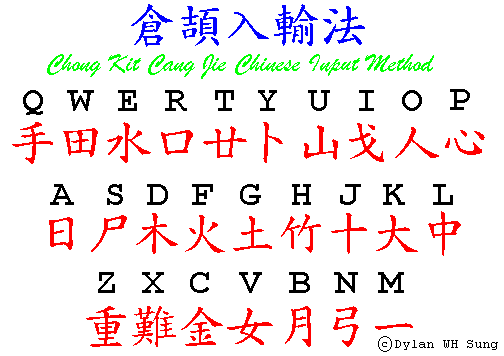
 , but first systemised by Cang Jie
, but first systemised by Cang Jie  around 2700 BCE.
around 2700 BCE.
Chong Kit, as he is known in Cantonese, is the name given to the method by which character codes can be imported into your word processing software e.t.c., From a chinese perspective there is a very systematic and logical way in which the keys are mapped onto the english keyboard.

It composes of four sets of characters which are mapped onto the english alphabetical keyboard.
The first set is known as the "Philosophical Set". It comprised of the characters for the sun, moon, and five elements of gold (metal), wood, water, fire, and earth. They are attributed the keys a through to g respectively.
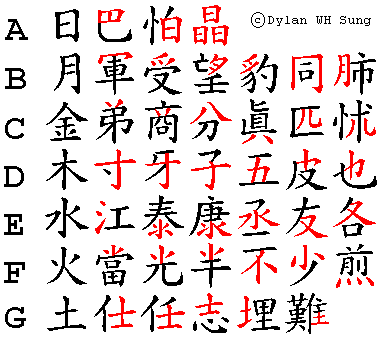
Next come the "Pen Strokes Set". They hold a clue as to the type of pen stroke used in the character. It is represented by bamboo (slant), halberd (dot), ten (cross), big (elements represented in the big character), middle (for center, verticals for lines that have multiple intersections), one (horizonatls, the work character), a bow (angles and hooked lines). These are mapped to keys h through to n respectively.
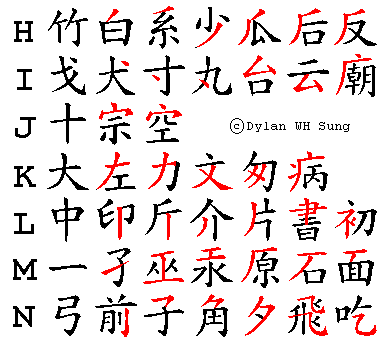
After that, come the "Body Parts Set". This has four items, basically the person radical, the heart radical, the hand radical, and mouth radical. These have letters o through to r assigned to them respectively.
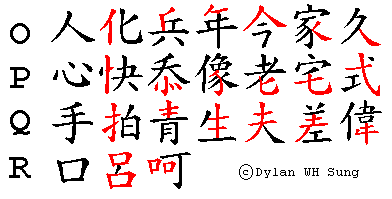
Finally, there are the "Character Shape Set". There are six mapped to s,t,u,v,w,y. In part or whole, elements of the characters are found in other character. The names of the members are the corpse radical, the abbreviated character for 20, the mountian radical, the woman radical, the paddy field radical and also the divination radiacal.
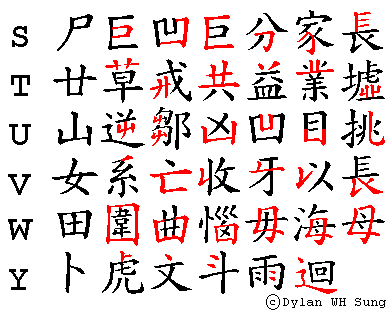
All but X and Z are used, but on some keyboards the word for difficult  is shown on the X key, and the word for heavy
is shown on the X key, and the word for heavy  on the Z. These represent all the alphabetical keys of the Chong Kit or CangJie input system.
on the Z. These represent all the alphabetical keys of the Chong Kit or CangJie input system.
The red portions of the words are typical parts that the lead character on the left represents.
My personal view on this method is that it can be quite arbitrary at times, and I do not use it.
I'd like to thank those who have written in to point out any errors which I've now corrected.